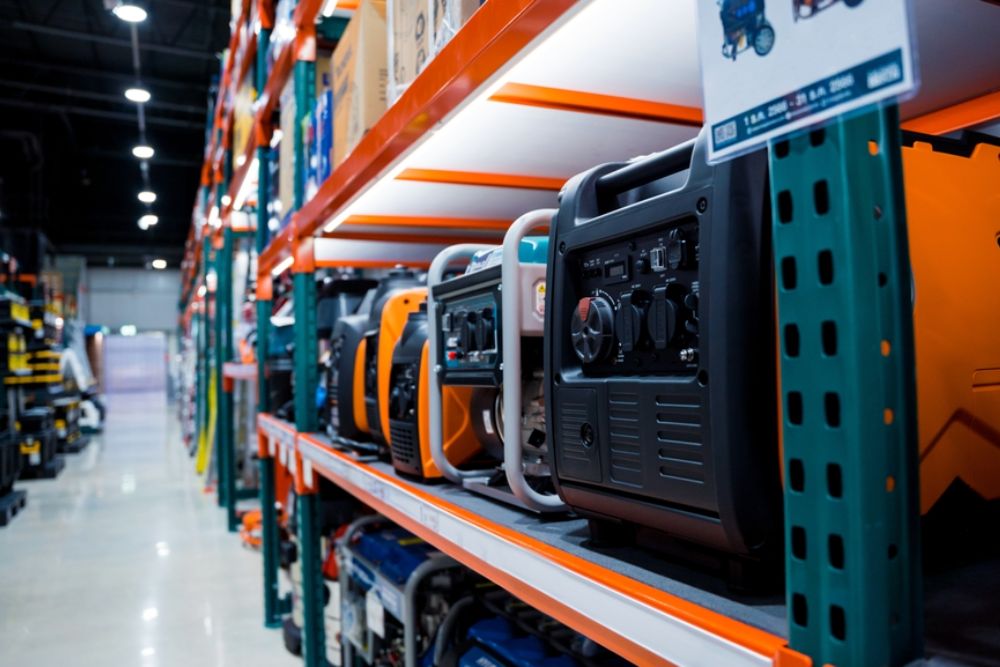Power outages can strike unexpectedly, whether from severe weather, grid failures, or natural disasters — and being prepared can make all the difference in your comfort and safety. One of the smartest investments a homeowner can make is a reliable emergency generator. But with so many options available, selecting the best generator for your home can be overwhelming.
From portable units to whole-house standby systems, this guide will walk you through everything you need to know to choose the right generator for emergency use — ensuring your lights stay on, your food stays cold, and your family stays safe.
1. Understand the Different Types of Generators
Before choosing a model, it’s important to understand the different types of home generators and how they work.
Portable Generators
-
Run on gasoline or propane.
-
Designed to power select appliances via extension cords or transfer switches.
-
Ideal for short-term outages or smaller homes.
Standby (Whole-House) Generators
-
Permanently installed outside the home and connected directly to your electrical system.
-
Automatically turn on during an outage.
-
Powered by natural gas or propane.
Inverter Generators
-
Quieter, more fuel-efficient versions of portable models.
-
Produce clean electricity, ideal for sensitive electronics.
-
Typically lower output, suited for essential needs only.
Each type serves different purposes, so your choice should reflect your power needs, budget, and level of convenience desired.
2. Calculate Your Power Requirements
Generators are rated by the number of watts they can produce. To select the right size, calculate how much power you need during an outage.
Two Types of Wattage:
-
Starting watts: The extra power needed to start appliances (e.g., refrigerators or pumps).
-
Running watts: The continuous power required to keep them running.
Estimate Your Needs:
-
Refrigerator: 600–800 watts (starting: 1,200+)
-
Sump pump: 750–1,500 watts
-
Lights: 60–300 watts per room
-
Furnace fan: 800–1,500 watts
-
Television: 150–400 watts
-
Cell phone charger: <10 watts
Add up the wattage for the devices you want to run. Most homeowners need a generator capable of 5,000 to 7,500 running watts for basic emergency needs.
3. Choose Your Fuel Type
Generators run on various fuel types, and each has its advantages depending on availability, cost, and convenience.
Common Fuel Options:
-
Gasoline: Easy to find, especially for portable generators. Short shelf life and not ideal for long outages.
-
Propane: Cleaner-burning and stores longer than gas. Requires proper storage and produces slightly less power.
-
Natural Gas: Available for standby systems connected to utility lines. Unlimited supply, no storage needed.
-
Dual-Fuel Models: Offer flexibility by running on either gas or propane.
Choose based on what’s accessible in your area, how long you need to run the generator, and your comfort level with handling and storing fuel.
4. Consider Manual vs. Automatic Operation
The level of automation you want during a power outage plays a key role in selecting the right model.
Manual (Portable Generators):
-
Requires you to go outside, start the generator, and connect it to appliances or a transfer switch.
-
Gives flexibility but demands time and physical effort during a stressful situation.
Automatic (Standby Generators):
-
Kicks on automatically within seconds of an outage.
-
Requires professional installation but offers total peace of mind and hands-free operation.
If you travel frequently or live in an area prone to long outages, a standby model may be worth the higher upfront cost.
5. Evaluate Run Time and Fuel Efficiency
Generators have a limited run time based on fuel capacity. Choose a model that offers the right balance between runtime and refueling needs.
Key Questions to Ask:
-
How long can it run at 50% load?
-
How large is the fuel tank?
-
Does it include an eco-mode to reduce fuel use?
For example, many portable generators run for 8–12 hours on a full tank, while standby units can operate continuously if connected to a natural gas line.
6. Look for Essential Safety Features
Safety is crucial when operating any generator. Look for models that include the latest protective technologies.
Must-Have Safety Features:
-
CO (carbon monoxide) sensors: Automatically shut off the generator if dangerous levels are detected.
-
Overload protection: Prevents electrical damage to the generator and connected devices.
-
Low-oil shutoff: Protects the engine from damage if oil runs low.
-
GFCI outlets: Reduce the risk of electric shock when using extension cords.
Never run a generator indoors or in enclosed spaces — always place it at least 20 feet from windows and doors.
7. Decide on Transfer Switch Requirements
If you want to connect your generator to your home’s electrical system, you’ll need a transfer switch.
Two Options:
-
Manual Transfer Switch: Used with portable generators; requires manual activation.
-
Automatic Transfer Switch (ATS): Used with standby generators; engages automatically during an outage.
A transfer switch prevents backfeeding (which is dangerous for utility workers) and lets you safely power hardwired systems like your furnace, sump pump, or well pump.
8. Don’t Overlook Noise Levels
Generators can be noisy — which matters if you live in a neighborhood or plan to use the unit overnight.
Average Sound Levels:
-
Portable Generators: 65–85 decibels (similar to a lawn mower)
-
Inverter Generators: 50–65 decibels (quieter than a normal conversation)
-
Standby Generators: Typically around 60–70 decibels
Look for models labeled as “quiet” or “low noise,” especially for residential use.
9. Budget for Installation and Maintenance
Beyond the cost of the generator itself, factor in installation, accessories, and long-term maintenance.
Additional Costs:
-
Transfer switch and professional wiring
-
Concrete pad for standby units
-
Annual oil changes, filters, and tune-ups
-
Fuel storage containers
Portable generators typically cost $500–$2,500, while standby systems can range from $3,000–$10,000+ including installation. Choose a model that fits both your needs and your long-term budget.
10. Research Brands, Warranties, and Support
Not all generators are created equal. Research trusted brands known for durability and service support.
What to Look For:
-
At least a 2–5 year warranty
-
Availability of local service centers
-
Positive user reviews for reliability
-
Easy access to replacement parts
Top brands to consider include Generac, Honda, Champion, Westinghouse, Briggs & Stratton, and DuroMax.





